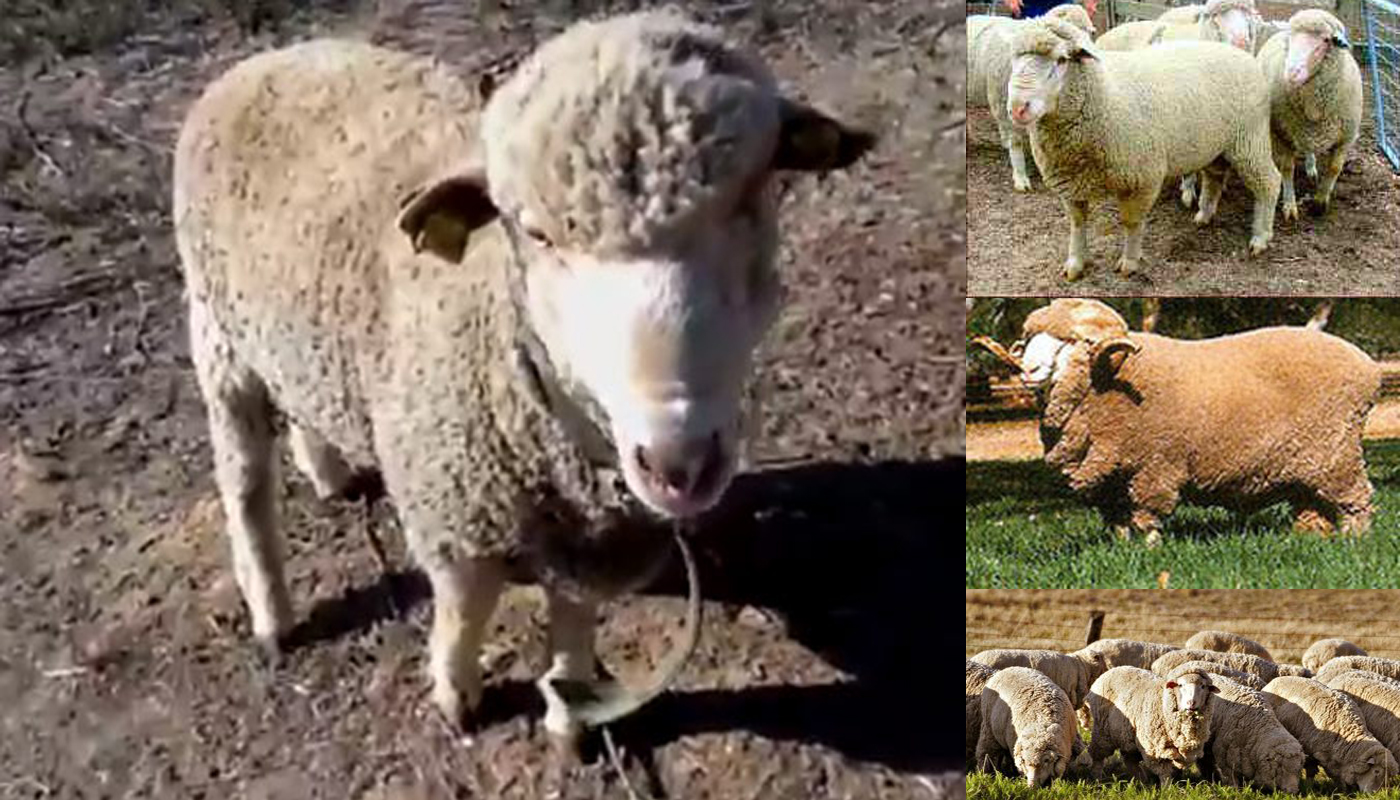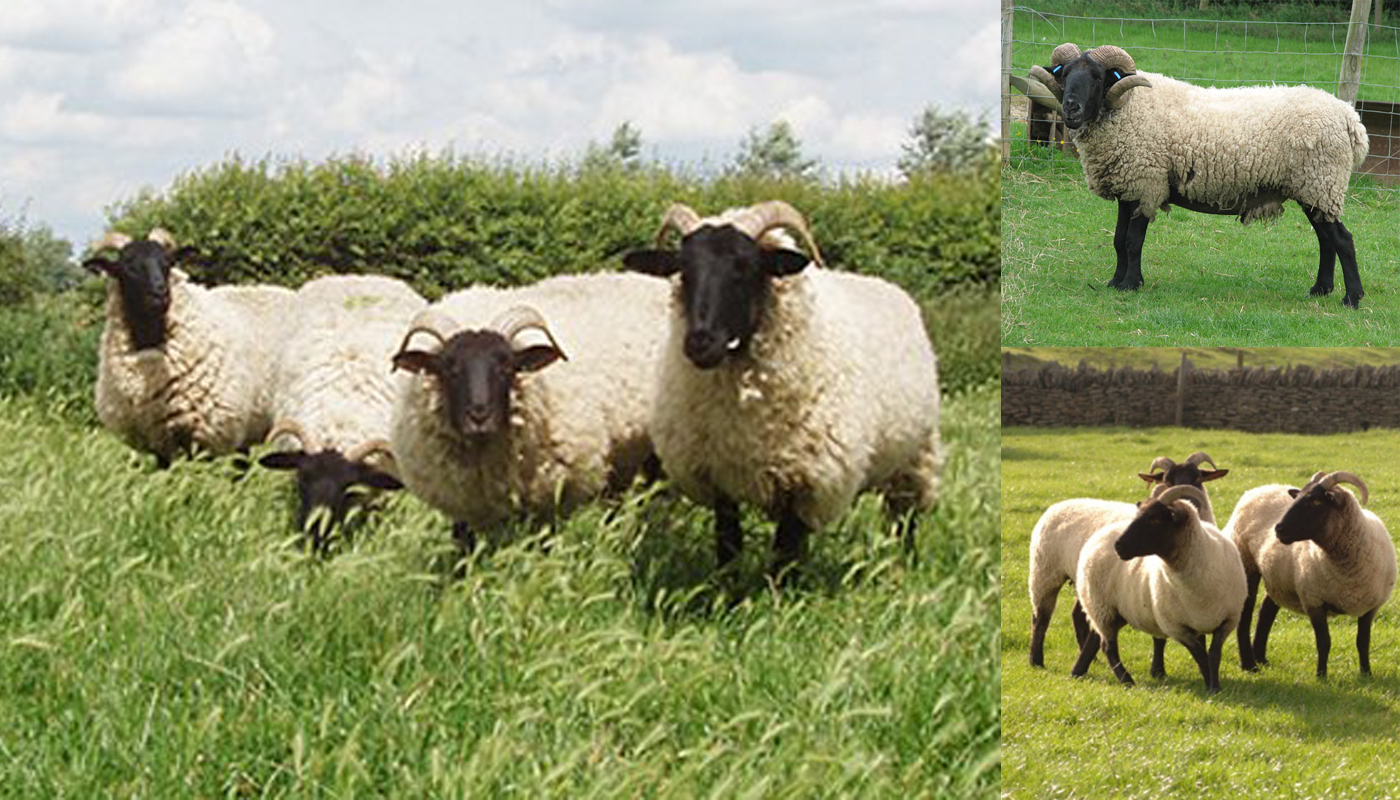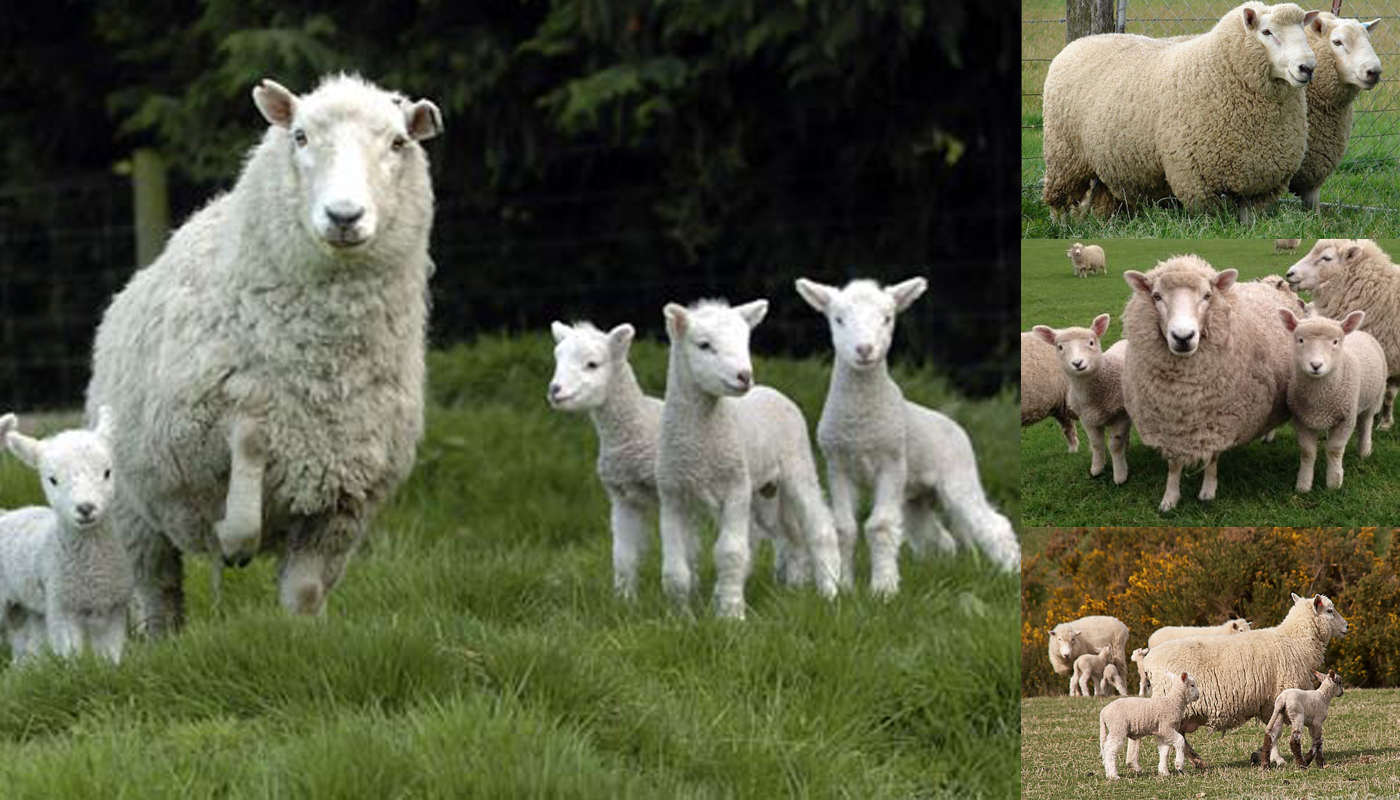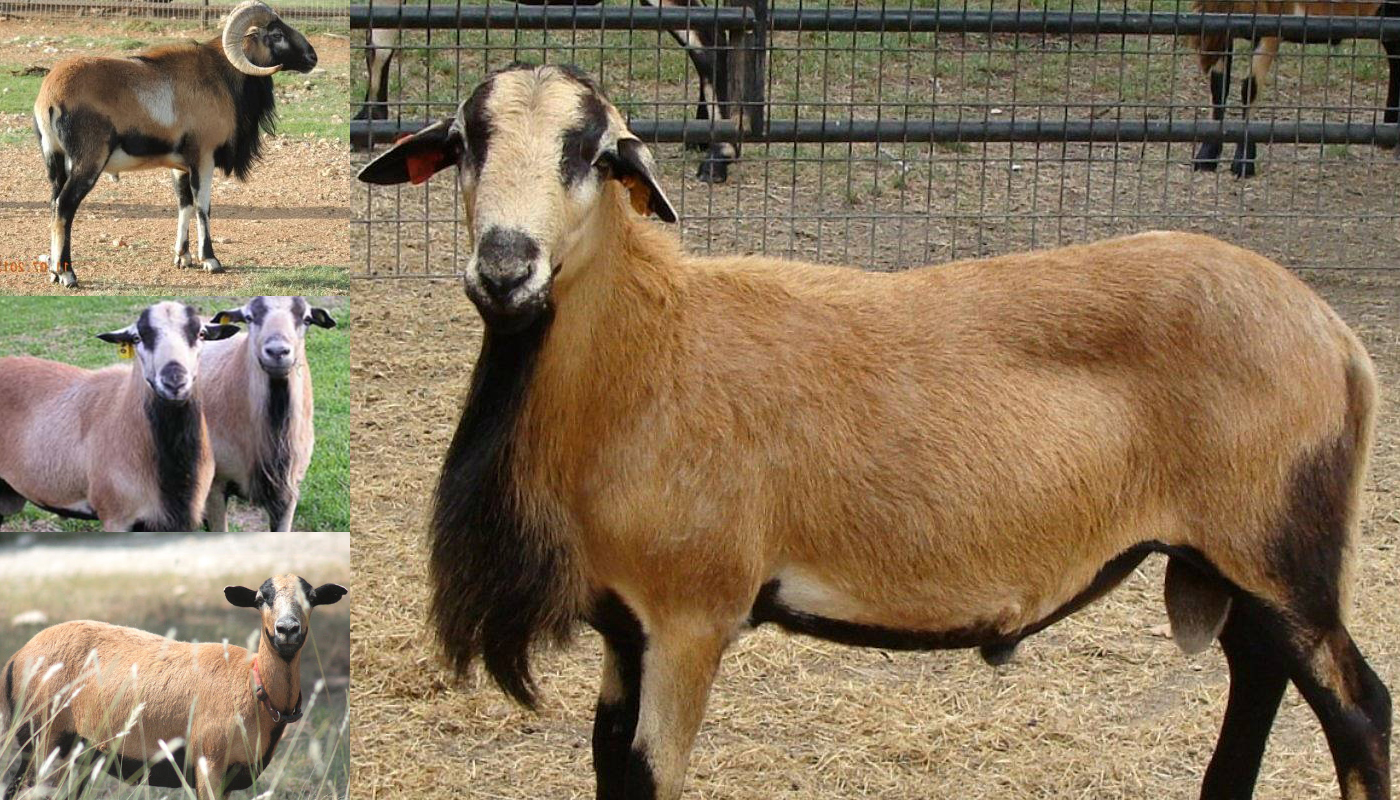
The Cotswold Sheep breed originated in the Southern midlands region of the England. Where they wondered the Cotswold hills grazing on the various greenery they found on the hills.
They are a dual-purpose breed that produce good meat and wool with the ewes displaying strong maternal instincts. These wooly sheep with their unique hairdo’s are a rather docile friendly bunch and have been around for generations.
COTSWOLD SHEEP QUICK PROFILE OVERVIEW |
|
|---|---|
| The Cotswold sheep breed are hardy, adaptable and easy to handle with their placid docile temperament | |
| Country of Origin: | United Kingdom |
| Other Names: | None |
| Breed Size: | Large |
| Main Purpose: | Meat and wool |
| You may Also Like: | 18 Best Wool Producing Sheep Breeds |
| Can be used for | Breed, Meat, Wool, **LSC (Landscape Management) |
| Temperament: | Docile and easy to handle |
| Ideal Climate: | Most climates |
| Conservation Status: |
Yes Listed by the *ALC Status/ Rarity: Threatened |
| Health Issues? | No known health issues |
| Good Starter Sheep? | They are an intermediate level sheep farmer/keeper |
| Sheep Associations: | American Cotswold Record Association |
| Sheep Clubs: | Cotswold Breeders Association |
| Note: *ALC stands for American Livestock Conservancy ** LSC stands for Landscape Management – the animal is used for controlling various vegetation growth |
|
PHYSICAL CHARACTERISTICS |
||||||||||||||||||||||||||||||||
|---|---|---|---|---|---|---|---|---|---|---|---|---|---|---|---|---|---|---|---|---|---|---|---|---|---|---|---|---|---|---|---|---|
| Known as “gentle giants” these beautiful docile sheep are really gentle and friendly. They have a large body with their wool covering their heads and sometimes their eyes. Their legs are usually covered with wool and they have black hooves and noses. | ||||||||||||||||||||||||||||||||
| Color(s): | White with occasional black spots on the wool or a mottled face. | |||||||||||||||||||||||||||||||
|
||||||||||||||||||||||||||||||||
EWE BREEDING & MILKING INFORMATION |
|
|---|---|
| The ewes breed once a year and mostly produce enough milk to wean their lambs. | |
| Breeding Period/cycle: | Usually lasts 16 to 59 hours |
| Estrous cycle: | Ave. 17 days/15 to 20 days |
| Gestation Period: | Usually, around 149 to 155 days but most gestation is 152 days |
| No. Lambs/Litter: | 1 to 2 (twins) lambs in a season |
| Lactation Period: | Usually, around 150 to 240 day but most are milked for 180 days |
| Milking From: | 4 to 6 weeks after lambing |
| Milk Quality: | Good, Quantity: Enough to wean lambs , Per: Lactation period |
| Milk Ideal for: | Lambs |
| You may Also Like: | 10 Best Sheep Breeds for Milk |
SHEEP MEAT PRODUCTION INFORMATION |
||||||||||
|---|---|---|---|---|---|---|---|---|---|---|
| A Cotswold sheep will usually be slaughtered around 4 months of age and will weigh approximately 18 to 22 kg’s at the time.
The Purebred lambs are said to have some of the most favorable tasting meat with a mild flavor that is the most in demand meat. The lambs are fast growing and generally grade well. They breed is also suitable for mutton and hogget, but the older sheep need to be kept under watch or they tend to put on fat really quickly. |
||||||||||
| Meat Production: | Yes, Quality: Excellent | |||||||||
|
||||||||||
| You may Also Like: | 11 Best Sheep Breeds for Meat Production | |||||||||
SHEEP WOOL PRODUCTION INFORMATION |
||||||||||||||||
|---|---|---|---|---|---|---|---|---|---|---|---|---|---|---|---|---|
| The Cotswold sheep has been producing wool for the wool trade since around the 15th century. | ||||||||||||||||
| Wool Production? | Yes, Quality: Heavy lustrous fleece with a Bradford count of 44s to 48s | |||||||||||||||
| Wool is used to Produce: | Ideal and in demand for hand spinners. They are used for other garments, wools, etc. | |||||||||||||||
|
||||||||||||||||
| You may Also Like: | 18 Best Wool Producing Sheep Breeds | |||||||||||||||
SHEEP SKIN PRODUCTION INFORMATION |
|||||||
|---|---|---|---|---|---|---|---|
| The lambs have excellent pelt quality and yields. The older sheep’s pelts are also used in the various manufacturing of leather goods products | |||||||
| Skin Production? | Yes, Quality: Good | ||||||
| Skin is used to Produce: | Kid skin leather products such as shoes, car seats, fine leather coats, gloves, etc. Chamois cloths, leather goods such as seats, shoes and other garments and leather materials such as furniture, etc. |
||||||
|
|||||||
GOOD TO KNOW ABOUT THE COTSWOLD SHEEP |
|
|---|---|
| A few more interesting facts to know about the breed | |
| Child-Friendly? | They are okay around children, but no child should be left unsupervised around any type of livestock no matter the animals temperament. |
| Landscape Management? | They are excellent foragers and landscape mangers |
| Where to buy them? | Please refer to the Cotswold Breeders Association for information on breeders |
| General Information | The Cotswold is a heritage breed and has been deemed as quite rare these days. It is also listed at the American Livestock Conservancy as a threated status. The Cotswold sheep fiber is highly prized and is sometimes referred to as a “Poor man’s mohair” In the 16th and 17th century the Cotswold sheep breed were nicknamed the “Golden Fleece breed” as they had a golden coat. |
HISTORY
The Cotswold sheep is said to be a very old breed of sheep that originated on the hilltops of the Southern midlands region of England.
The Cotswold sheep has been described as a large white-woolled sheep breed with a white face. They are usually polled, with black hooves and sometimes small black spots on their ears.
They have basically been described the same way in registries for almost five-hundred years and captured on wall paintings as such going back maybe another 200 odd years.
There is another breed of Cotswold sheep called the Black Cotswold that exhibits the same traits and the Cotswold sheep but is, in fact a breed of its own.
Christopher Dunn was the first to introduce the Cotswold sheep to America in 1832. After wich they were deemed the most popular sheep breed in America by 1879. There over 760000 recorded head of Cotswold sheep in America. Even when the Merino sheep was fist introduced to America from Australia the Cotswold sheep still reigned supreme as the favorite breed.
The Merino’s more superior fleece and quick maturing lambs soon took over as the most popular and prominent sheep breed in America. So much so that by the 1980’s there were fewer than 600 recorded Cotswold in Britain and the US. By 1993 there were less than 400 registered lambs.
This put the Cotsworld on the “rare” breed list of the American Livestock conservancy. It shook up some of the sheep community who took an interest in the breed and started to become popular as a wool breed amongst spinners.
VIDEO
USEFUL LINKS
- United States Lamb Resource Center
- American Sheep Industry Association
- American Sheep Industry Association List of Breed Associations & Standards
- American Milk Sheep Association
- Dairy Sheep Association of North America
- American Wool Council
- Fur Commission USA
- North American Meat Institute
- American Lamb Board
- National Lamb Feeders Association
- American Livestock Conservancy
- Animal Shelter (ASPCA)
- American Veterinary Medical Association
- American Animal Welfare Society
- American Animal Control
- American Animal Husbandry Society
- United States Department of Agriculture
 Cheviot Sheep Breed – Everything You Need to Know
Cheviot Sheep Breed – Everything You Need to Know Dorper Sheep Breed – Everything You Need to Know
Dorper Sheep Breed – Everything You Need to Know Navajo-Churro Sheep Breed – Everything You Need to Know
Navajo-Churro Sheep Breed – Everything You Need to Know Delaine Merino Sheep Breed – Everything You Need to Know
Delaine Merino Sheep Breed – Everything You Need to Know Norfolk Horn Sheep Breed – Everything You Need to Know
Norfolk Horn Sheep Breed – Everything You Need to Know Perendale Sheep Breed – Everything You Need to Know
Perendale Sheep Breed – Everything You Need to Know Dorset Down Sheep Breed – Everything You Need to Know
Dorset Down Sheep Breed – Everything You Need to Know Scottish Blackface Sheep Breed – Everything You Need to Know
Scottish Blackface Sheep Breed – Everything You Need to Know Romney Sheep Breed – Everything You Need to Know
Romney Sheep Breed – Everything You Need to Know American Tunis Sheep Breed – Everything You Need to Know
American Tunis Sheep Breed – Everything You Need to Know Barbados Black Belly Sheep Breed – Everything You Need to Know
Barbados Black Belly Sheep Breed – Everything You Need to Know Awassi Sheep Breed – Everything You Need to Know
Awassi Sheep Breed – Everything You Need to Know